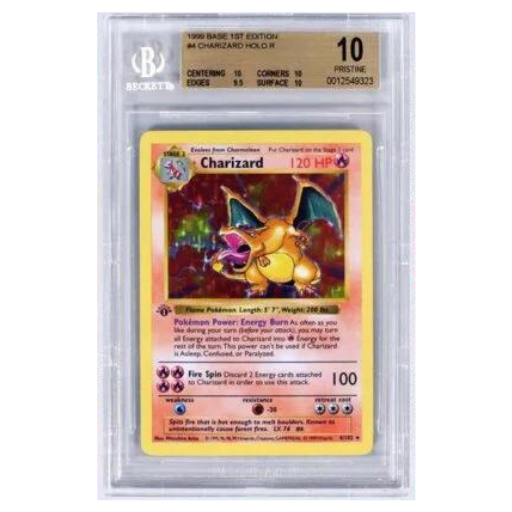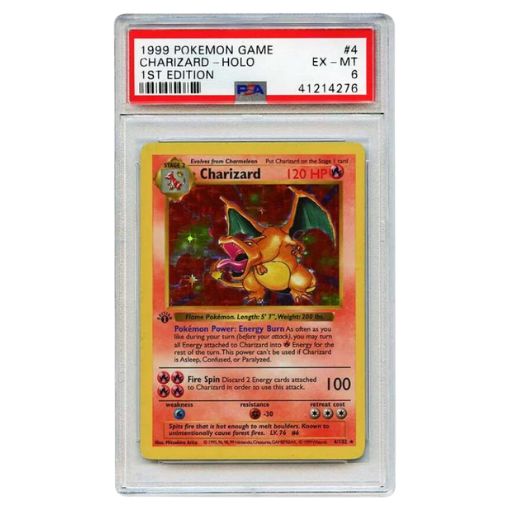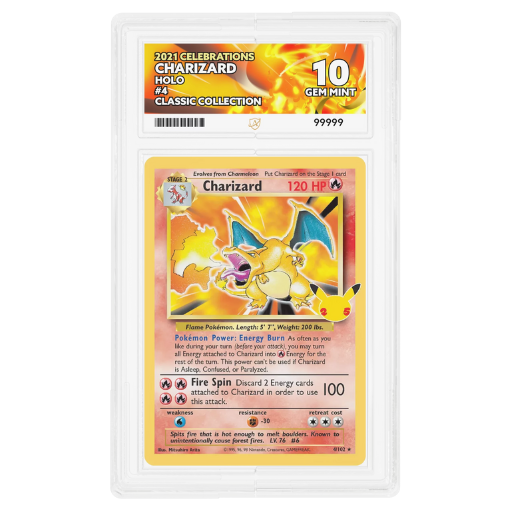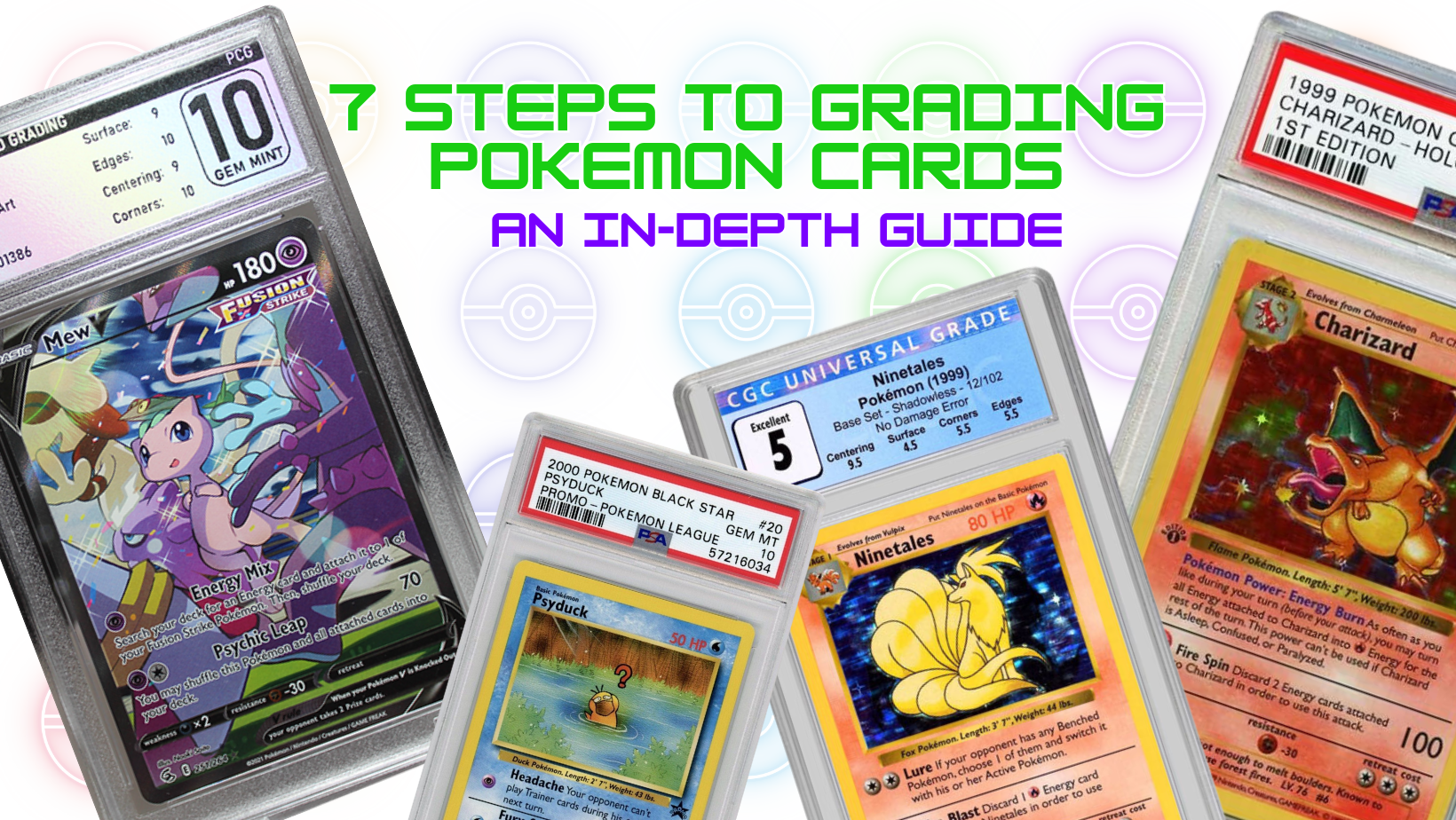Introduction
So in this post we will go through 7 Steps to grading Pokemon cards.
In the world of Pokémon card collecting, grading is a process of great importance. It is the evaluation of the condition of a card by a professional service, where it is assigned a numerical grade based on its condition and physical attributes. The better the grade, the higher the value of the card, as it has been validated by a reputable organization as being in a certain condition. The grade effectively becomes a part of the card’s identity and value.
This comprehensive guide will help you navigate the world of Pokémon card grading, understand the differences between various grading companies, and walk you through the steps needed to get your card graded from start to finish.
Grading Companies – United States
Professional Sports Authenticator (PSA)
PSA is arguably the most popular and recognized grading company in the world. Founded in 1991, they have developed a strong reputation for accurate and consistent grading. Their 10-point grading scale is known for being strict and consistent, with a PSA 10 being the pinnacle of card quality.
Beckett Grading Services (BGS)
BGS is another reputable grading company founded in 1999. It’s recognized for its thorough card assessments, and its unique four-subcategory grading system (centering, corners, edges, and surface) allows collectors to get a detailed understanding of their card’s condition. The BGS uses a scale of 1-10, with 10 being Gem Mint.
Certified Guaranty Company (CGC)
A newer entrant to the card grading scene, CGC is a subsidiary of the Certified Collectibles Group (CCG) that has been grading comic books, coins, and other collectibles since 1987. CGC is known for its accuracy, consistency, and integrity. Their 10-point grading scale is similar to PSA’s.
ACE Grading
ACE Grading, or Authentic Collectable Enterprises Grading, is an emerging company in the world of Pokémon card grading. It is endorsed by former Pokémon World Champion Michael Pramawat and provides comprehensive services including card grading, card authentication, and pop report services.



Grading Companies – United Kingdom
PokeGrade
PokeGrade is one of the few grading services dedicated exclusively to Pokémon cards in the UK. They offer various services including card grading, card cleaning, and card authentication. PokeGrade uses a 10-point scale similar to their American counterparts.
Treefrog Grading
Treefrog Grading is a reliable choice for collectors in the UK. They have a solid reputation for providing accurate and fair grades, utilizing a detailed 10-point grading scale. They grade a variety of trading cards including Pokémon , Yu-Gi-Oh!, and Magic: The Gathering.
Platinum Card Grading (PCG)
PCG is a rising star in the UK Pokémon card grading scene. They provide a range of services including card grading, authentication, and encapsulation services. They utilize a strict 10-point grading system.
Steps Needed to Grade a Card
The process for grading a card involves several steps. While each grading company might have slight variations, the basic process remains the same.
Step 1: Pre-Grading
Before sending your card to a professional grading service, it’s a good idea to pre-grade your card. Examine your card’s corners, edges, centering, and surface for any flaws, using a magnifying glass for a closer look.
Step 2: Selecting a Grading Company
After pre-grading, select a grading company that suits your needs. Consider the company’s reputation, grading standards, turnaround time, and grading fees.
Step 3: Packaging Your Card
Ensuring the safe transportation of your Pokémon cards to the grading company is a crucial step in the grading process. Proper packaging will prevent potential damage during transit that could influence the grade your card receives. Below, we break down the essentials for packaging your cards correctly.
Supplies You’ll Need
- Card Saver or Semi-Rigid Card Holder: This is the preferred card holder for most grading companies because of its rigidity and the ease with which cards can be removed without causing damage.
- Penny Sleeve: A soft plastic sleeve that offers a first layer of protection. It gets its name from its affordable price.
- Bubble Wrap or Foam Wrap: For additional protection and cushioning inside the package.
- Bubble Mailer or Cardboard Box: The external package in which everything will be shipped.
- Tape: To securely seal your package.
Packaging Your Cards:
- Penny Sleeve: Gently insert your card into a penny sleeve. This serves as the first layer of protection against any dust, scratches, or other surface damage.
- Card Saver: Next, carefully insert the penny-sleeved card into a card saver or semi-rigid card holder. Ensure it’s centered and secure.
- Stacking Multiple Cards: If you are sending multiple cards, stack them neatly, ensuring the card savers don’t rub against the cards’ surface. If you have many cards, consider dividing them into smaller stacks.
- Wrapping the Cards: Once your cards are in the card savers, wrap them in bubble wrap or foam wrap. If you have multiple stacks, wrap each stack individually. Make sure the wrap is snug but not overly tight, which could cause damage.
- Placing in the Mailer or Box: Place the bubble-wrapped stacks into a bubble mailer or a small cardboard box. They should fit snugly, with little room to move around. If there’s extra space, fill it with additional bubble wrap or packing paper to prevent movement during transit.
- Sealing and Labeling the Package: Seal the package securely with tape, making sure all edges are closed. Write or print the address of the grading company on the package. Double-check the address for accuracy.
- Shipping and Insurance: When shipping, opt for a service that offers tracking. This allows you to follow your package’s journey and know when it arrives at the grading company. Consider purchasing insurance for the package, especially if your cards are of significant value. The insurance can protect you against loss or damage during shipping.
Step 4: Completing the Submission Form
Each grading company has a submission form that you’ll need to fill out. The form typically asks for information about the card and the services you want. Some grading companies allow you to submit this form online, while others require you to print it out and include it with your card.
Step 5: The Grading Process
Once your card reaches the grading company, they will confirm its receipt and start the grading process. Professional graders examine the card under special lighting and magnification. They look at the card’s centering, corners, edges, and surface, assigning a grade based on the company’s grading scale.
Step 6: Receiving Your Card
After the grading process, your card is encapsulated in a tamper-evident, plastic case with a label indicating the card’s information and grade. It is then shipped back to you.
Step 7: Verification and Pop Reports
Once you receive your card, you can verify its grade using the grading company’s online database. Some companies also provide a population report (pop report), which shows how many cards of a particular type they’ve graded and what grades those cards have received.
Grading Turnaround Times: An Overview
One important aspect to consider when choosing a grading company is their turnaround time, which is the estimated time it takes from when the grading company receives your cards to when they send them back to you. The grading process involves various stages, including intake, verification, grading, encapsulation, and shipping. It’s important to remember that these are estimates and actual times can vary depending on the grading company’s workload.
Below is an overview of the general turnaround times for each of the mentioned grading companies as of my knowledge cutoff in September 2021. Please note that these times are subject to change and should be verified directly with the grading companies for the most accurate and up-to-date information.
United States
Professional Sports Authenticator (PSA)
PSA offers several service levels based on the declared value of the card, with turnaround times ranging from 1 business day for Super Express service to 85 business days for Economy service. Please note that due to a significant increase in submissions, PSA has experienced delays and even suspended some of their services temporarily.
Beckett Grading Services (BGS)
BGS also offers a variety of service levels with turnaround times ranging from 2 business days for Premium service to 60 business days for Economy service. Their turnaround times can also be extended due to high volumes of submissions.
Certified Guaranty Company (CGC)
As of 2021, CGC listed their turnaround times as 30 business days for their Standard service and 5 business days for their Express service. However, high demand has led to potential delays.
ACE Grading
ACE Grading is a newer company, and as of my last update, specific turnaround times were not readily available on their website. It’s recommended to reach out to them directly for the most current information.
United Kingdom
PokeGrade
PokeGrade has an estimated turnaround time of 30 working days for their Standard service. However, as with all grading services, this can vary depending on the volume of submissions.
Treefrog Grading
Treefrog Grading’s turnaround time is typically around 30 working days for their Standard service.
Platinum Card Grading (PCG)
PCG has an average turnaround time of 30-40 business days for their Standard service.
Grading turnaround times can be an important factor in deciding which company to use, particularly if you’re working with a deadline or if the speed of service is a priority for you. It’s always a good idea to check the grading company’s website for the most current turnaround times or contact them directly for this information.
Conclusion
These 7 Steps to grading Pokémon cards might seem like a daunting process at first, but it is an essential part of the hobby that ensures the quality and value of your collection. Whether you choose PSA, BGS, CGC, ACE Grading, PokeGrade, Treefrog Grading, or PCG, each company provides a valuable service that can help enhance your card collecting experience. Remember, the condition of your cards upon arrival significantly influences the grades they receive. So, while packaging might seem tedious, it’s a vital part of the process. A small investment in time and materials can help protect your cards and potentially enhance their value. Happy grading!
Thinking of Grading in the future and want to store your cards for when the time is right? Check out this post for the ultimate guide to protecting your cards!





